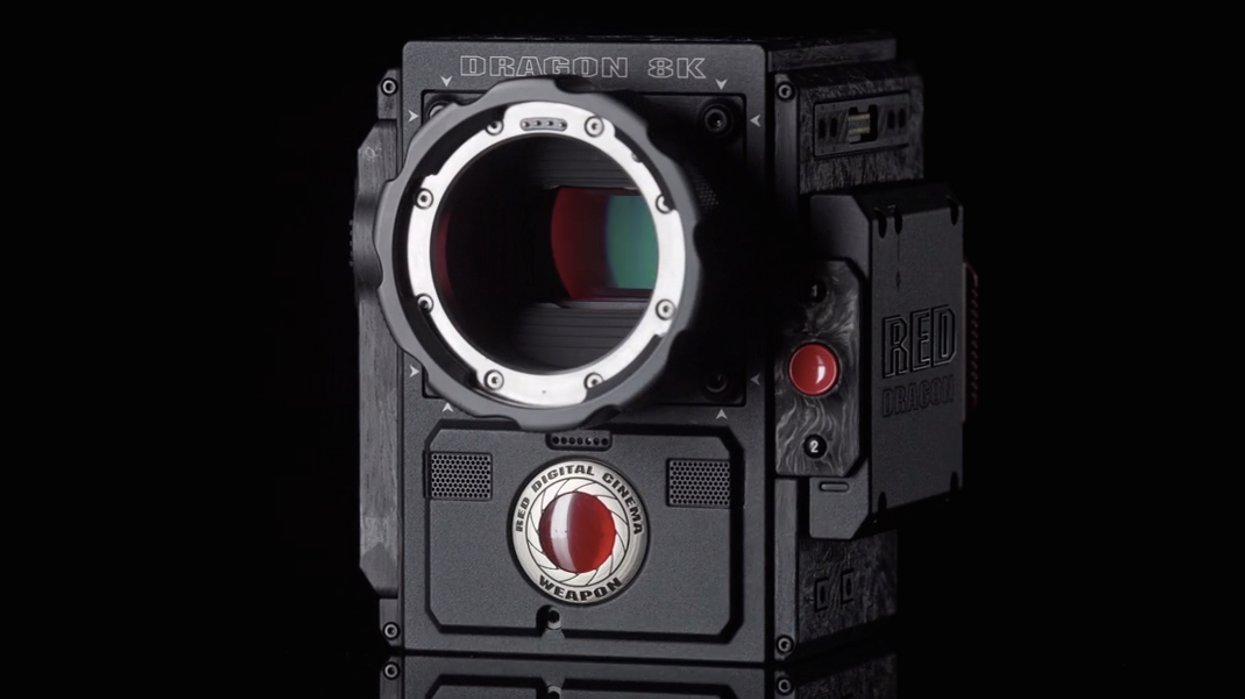First Film to Shoot on RED's 8K Vista Vision Camera is 'Guardians of the Galaxy Vol. 2'
RED has just confirmed that the first major feature film shooting on their new 8K camera is Guardians of the Galaxy Vol. 2.

While the flagship 8K WEAPON Vista Vision/full-frame 35mm camera is a lot more than most of us need right now, major Hollywood features can always find a way to take advantage of more resolution and higher frame rates. This camera is slowly starting to trickle out to RED users who have pre-ordered it, but as always with the newest tech, high profile shows often get first crack at it. The 8K DRAGON sensor shares similar image characteristics — like pixel size, color, and dynamic range — as the 6K DRAGON sensor, but is much larger.
The 8K WEAPON camera can shoot at a variety of resolutions including 6K, 5K, 4K, etc. (and of course 8K at 8,192 x 4,320), and for a comparison, here's what that RED 8K frame looks like compared to some other formats:
Here's RED's press release on this:
“We are all hugely excited to be shooting the next Guardians of the Galaxy on the new WEAPON 8K. This is my third collaboration with RED, having previously shot with the RED EPIC® on Prometheus and the EPIC DRAGON on Tarzan,” says Nik Korda, Executive Producer. “The large sensor size and super high resolution offered by the new WEAPON 8K, combined with its lightweight and compact size open up a whole range of new creative possibilities.”
WEAPON 8K captures 8K at 75 frames per second (fps), 6K at 100 fps, or 4K at 150 fps with REDCODE® RAW; and its wide dynamic range produces cinema-quality images rich with natural color. Additionally, WEAPON 8K features interchangeable lens mounts, an intelligent OLPF system, and in-camera 3D-LUT outputs.
“RED’s 8K WEAPON is the little big camera. Perfectly counterintuitive. And perfect for Guardians of the Galaxy Vol.2,” says Henry Braham, BSC, Director of Photography.
As with the rest of the industry, if people have a good experience using a particular product, they're usually going to go back, and we're seeing that again here with the choice of the 8K WEAPON for Guardians 2, as DP Henry Braham, BSC previously worked with RED on Tarzan. James Gunn, the director, used the RED ONE on his film Super, and though the first Guardians film was mostly ALEXA, he's gone back to RED for the newest film shooting in February. Gunn expanded on why this camera was chosen over something like the ARRI 65 on Facebook:
It was a huge question. I love both cameras. It came down to the fact that we're employing some additional new technologies in creating the film and I needed the smaller physical size of the RED to do so.
It will be interesting to see what kind of workflow and what lenses they choose for the film. The Vista Vision sensor on the WEAPON 8K means they'll have to choose lenses that cover full-frame 35mm or larger, though I imagine it's possible that only parts of the film will actually be shot in 8K, just like we've seen with other films that shoot higher-quality formats for specific scenes.
It's not out of the realm of possibility that most, or all of it could be in 8K full-frame, however, as a movie like The Revenant, which is now in theaters, shot quite a bit of the film on ARRI's 6K ALEXA 65 (above 10% or close to 25% depending on the source). That camera has a much larger sensor than Vista Vision, and at times much higher data rates due to being uncompressed RAW (while RED's is compressed).
Inevitably people will ask why anyone wants to shoot higher than 4K when that's the maximum we can see in a theater, but with the way sensors are designed, you're not getting a 1:1 pixel ratio for each color channel. A Bayer pattern sensor, which is what all of these cameras use, puts an emphasis on the color green, and has to interpolate color information:
The higher the resolution of the sensor to start off with, the more color information we're going to have, and therefore the higher the "resolved detail" will be. 8K can give a sharper and clearer 4K, just like 4K can deliver a sharper and clearer 2K/1080p image. This is one of the reasons that Sony's F35 and F65 both have much higher resolutions than their final output. The F35 had a 5K sensor for 1080p output and the F65 has an 8K x 2K sensor for a 4K output.
Beyond this, for VFX, reframing, and stabilization, having more resolution than your intended output can always be helpful.
Source: REDuser















